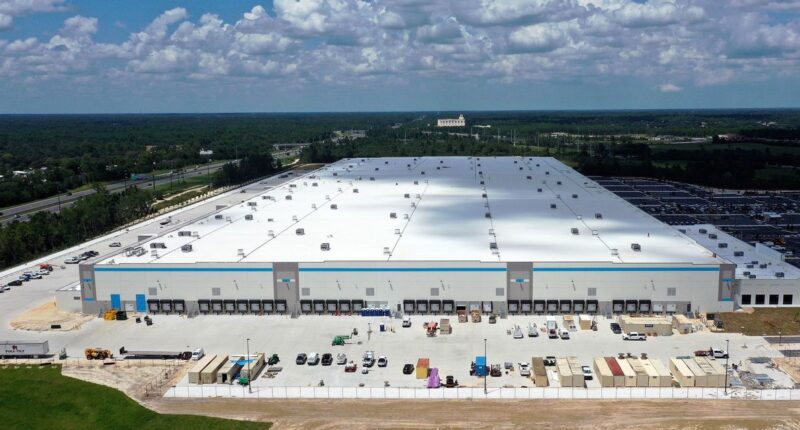
The U.S. warehousing market is retrenching heading into 2023, a turnaround from the pandemic-driven boom in industrial real-estate demand as companies slow down decisions on new storage and distribution space amid fears of a recession.
Companies leased 132 million square feet of industrial space across the U.S. in the fourth quarter, down 28.2% from the third quarter, according to a new report from commercial real-estate services firm Cushman & Wakefield. That was the second straight quarter-to-quarter drop in leasing.
After “the extreme acceleration we saw the past couple years, there’s just a natural kind of cooling right now,” said Carolyn Salzer, Americas head of logistics and industrial research for Cushman & Wakefield.
The pullback follows several years of frenetic expansion in warehousing construction and leasing as a surge in online shopping driven by the Covid-19 pandemic pushed companies to snatch up space to get goods closer to consumers. Retailers have been pulling back on their inventory restocking since the middle of last year, however, and companies that were once scrambling for space are rethinking logistics expansion.
Amazon.com Inc. doubled the size of its fulfillment network in 24 months as its business surged. But the e-commerce giant last year started paring back growth in its warehousing operations and began to sublease some of its space as e-commerce growth slowed. Amazon on Wednesday said it is planning to lay off more than 18,000 employees, mostly in its corporate ranks, as it seeks to cut costs as online sales growth has retreated.
The warehousing market remained tight in the fourth quarter even as the vacancy rate ticked up to 3.3% from 3.1% the prior quarter, the Cushman & Wakefield report said. That was the second-straight quarter that vacancy increased after two years of tightening availability, but the empty space remains far below the 5% average vacancy rate in 2020.
For the full year, companies leased a net total of 756.8 million square feet of industrial space in 2022, down 18% from the year before.
The leasing slowdown raises the potential for a glut of new warehouse space in the coming months, with 682.6 million square feet of new development in the construction pipeline, Ms. Salzer said. About 83% of the new space is being built without tenants lined up, known in the real-estate sector as speculative projects.
“It is a concern,” Ms. Salzer said, particularly in markets in regions such as the Western U.S. and the Northeast, where leasing slowed more than the national average.
Developers are paring back their plans for new projects as financing becomes increasingly difficult to secure, Ms. Salzer said. The amount of new space under construction was down 4.3% compared with the previous quarter, according to the report.
Write to Liz Young at [email protected]
Copyright ©2022 Dow Jones & Company, Inc. All Rights Reserved. 87990cbe856818d5eddac44c7b1cdeb8
Appeared in the January 6, 2023, print edition as ‘Warehouse Leasing Fell Off at Year-End.’








